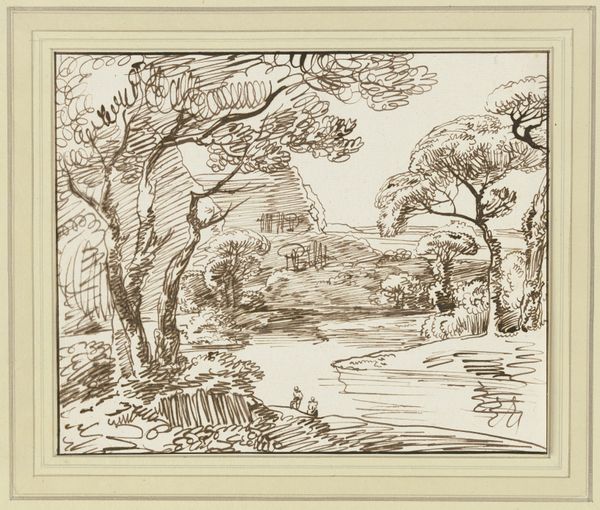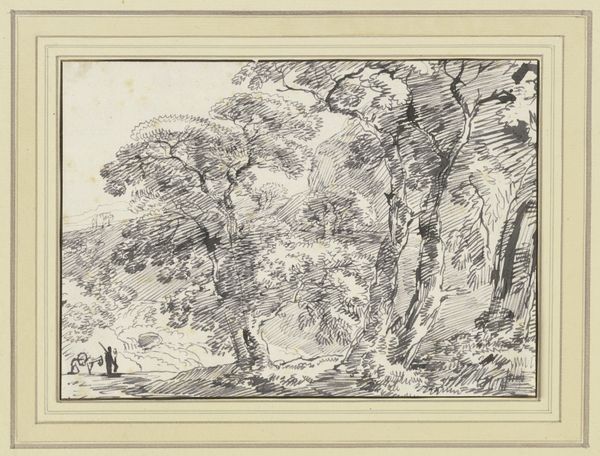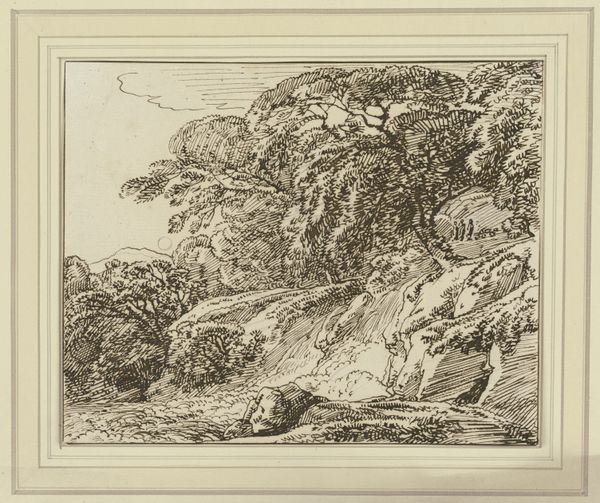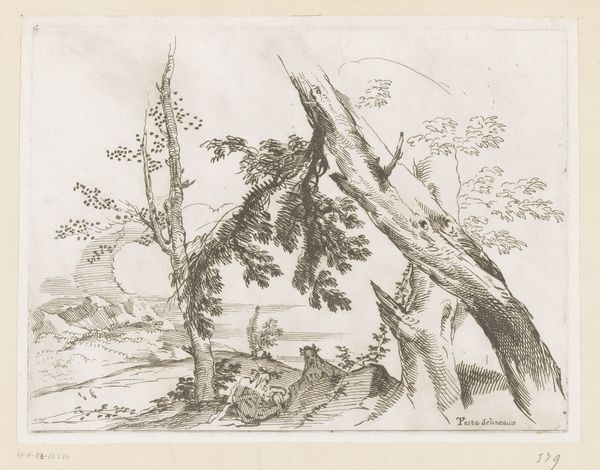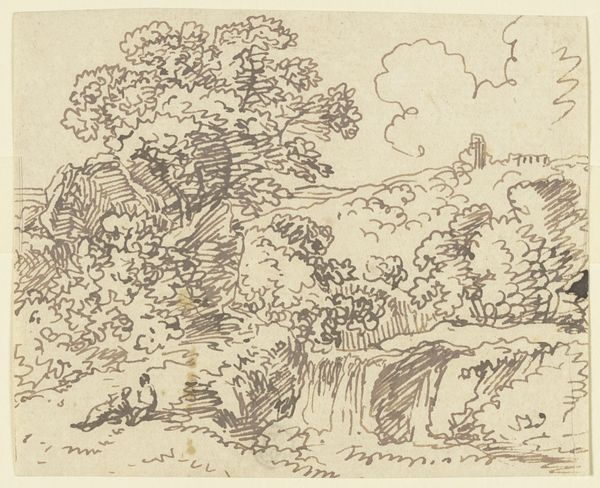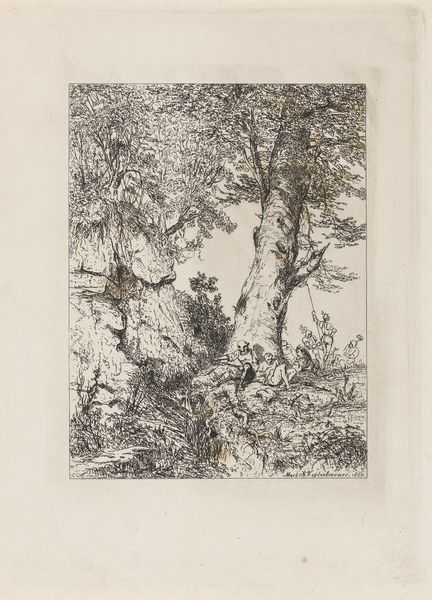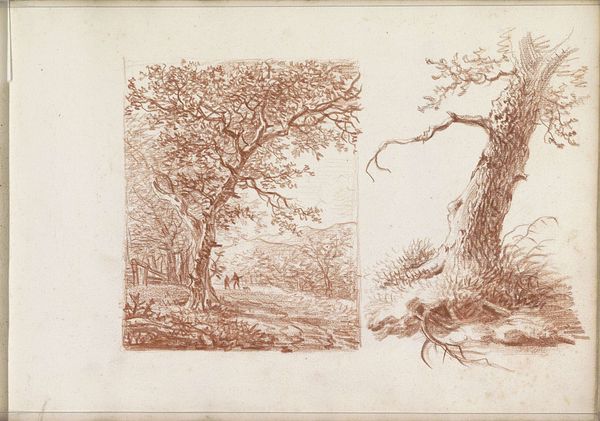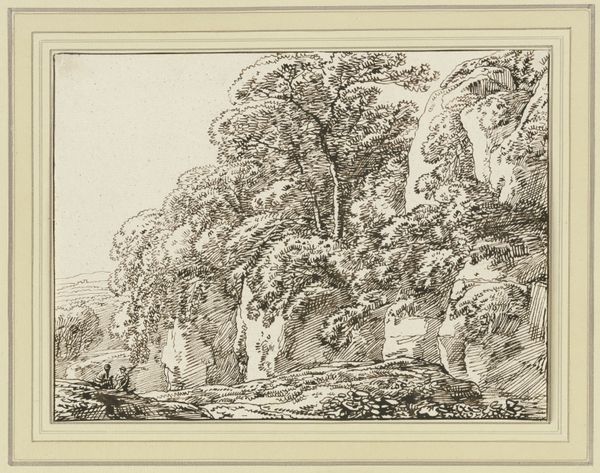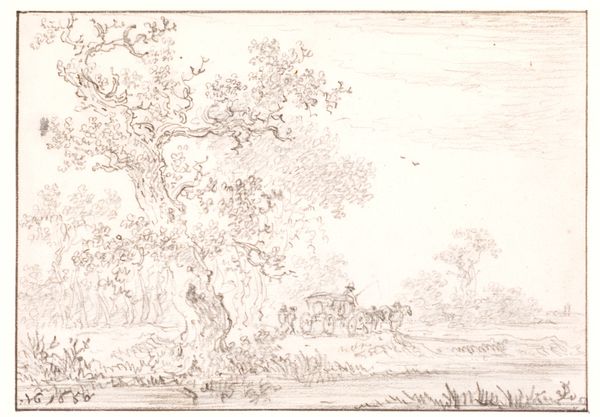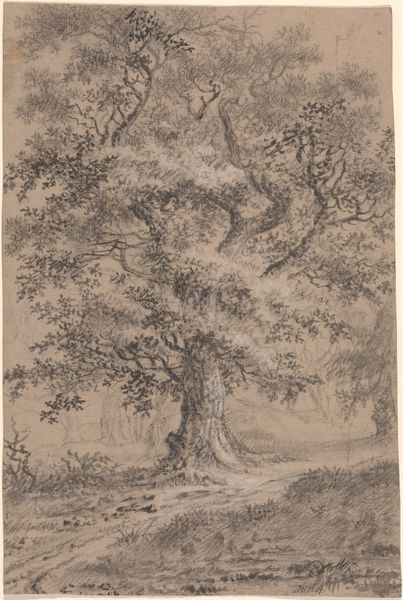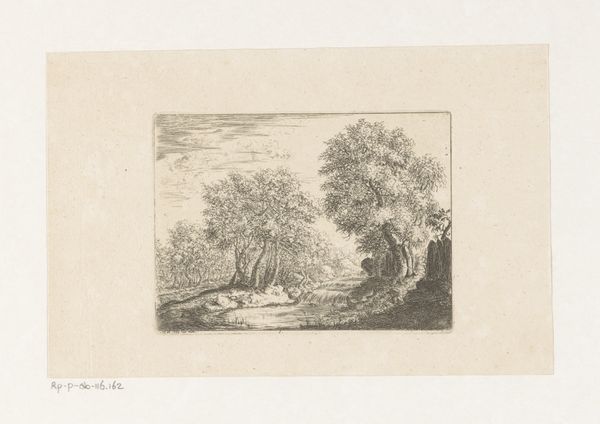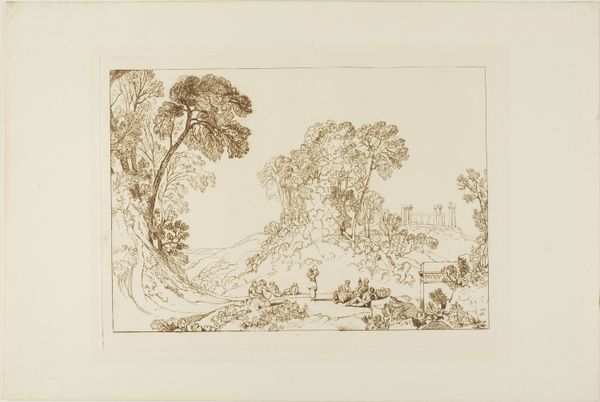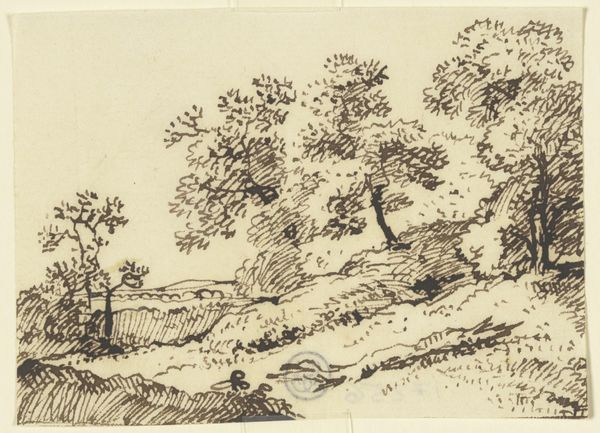
drawing, paper, ink
#
drawing
#
landscape
#
paper
#
ink
#
15_18th-century
Copyright: Public Domain
Editor: So, this drawing is titled "Landscape with Grazing Sheep under a Large Tree" by Franz Kobell, rendered in ink on paper, placing it somewhere in the 18th century. It has a rather peaceful, almost idealized feel. What stands out to you when you look at it? Curator: For me, it’s about understanding the conditions of its production and consumption. Kobell wasn’t just capturing a scene; he was crafting a commodity. Look at the precise rendering – this isn’t about raw, emotional expression, it’s about a marketable skill, about draftsmanship. Ink was a readily available and cost-effective medium, well-suited to creating multiples, which allowed him to reach a wider audience. How do you think the social climate influenced his choice of subject? Editor: That’s a great point about ink enabling mass production. Thinking about the sheep in the foreground…perhaps it connects to the rise of pastoral aesthetics among the landowners? Curator: Precisely! This is not just any landscape; it is a *cultivated* landscape. Notice how the trees are rendered, not in their wild state but rather with careful pruning and shape that evokes harmony. Sheep represented wealth, property, a tamed environment easily exploited. It speaks volumes about the relationship between humans and nature during that era. The medium itself underscores its connection with the print market of the time; ink drawings were more easily and cheaply translated into printed editions compared to oil paintings or other visual forms. Did Kobell, then, see himself primarily as a "fine artist"? Editor: I never thought about landscape drawing in terms of materials! I’d assumed that the artist found an ideal setting, and captured it, instead of seeing that the art itself connects to economics and the cultural values of the era. Curator: And the act of depicting sheep and stylized trees speaks to the role of rural labor – conveniently idealized in a way that obscures their material conditions. Think of what he *isn't* showing us – the backbreaking work that creates this illusion of picturesque beauty. This focus and the rendering connect to the broader economics of this piece and art. Editor: So, in this way the drawing itself becomes a material manifestation of social and economic structures? Curator: Exactly. Looking beyond its representational content lets you uncover deeper meaning about how the painting came into being, what the social dynamics it represents were, and the potential political meaning behind this landscape genre.
Comments
No comments
Be the first to comment and join the conversation on the ultimate creative platform.
